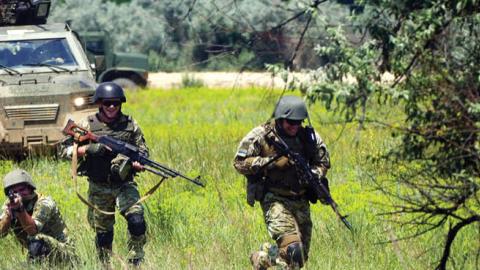This week’s virtual summit between President Biden and Vladimir Putin took place in an environment of diplomatic coercion, with Russian troops massing on the border with Ukraine. So far, the punitive actions at which the White House has hinted are insufficient to deter the Kremlin from further aggression. How did we arrive at a point where the U.S.-led security system, which has protected Europe for more than 70 years, appears to be tottering in the face of Russian saber-rattling?
The post-Cold War expansion of the European security system, built on the foundation established by the North Atlantic Treaty Organization, was a welcome and widely anticipated development. The smaller states of Central and Eastern Europe knew from bitter experience that collective security within the trans-Atlantic alliance was the only viable 21st-century alternative to the calamities of the previous century.
As NATO added members, the Cold War pattern of military deployments along what had been the border between East and West Germany didn’t change. During the Cold War, the world’s most powerful military forces were concentrated at the Fulda Gap, the lowland corridor that was the shortest distance between East Germany and the Rhine River and therefore the likeliest location of a Soviet tank invasion of West Germany.
In 1997 NATO indicated it wouldn’t place “substantial combat forces” in the territory of new members. But this expectation was conditioned on Russian respect for the independence and territorial integrity of the 14 other states created by the Soviet Union’s collapse. Mr. Putin’s annexation of Crimea in 2014 abrogated both the multilateral 1994 Budapest Memorandum and the bilateral 1997 Treaty of Friendship, Cooperation and Partnership between the Russian Federation and Ukraine.
Read the full article in the Wall Street Journal















